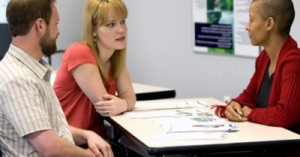In early childhood settings, the word “no” carries weight. It can signal safety, set boundaries, and teach children about limits. Yet, in some centres, policies now discourage educators from using “no” in any context, sparking debate across the sector. Is saying “no” harmful—or essential? And if we’re not saying “no,” what are we saying instead?
Why Educators Should Be Mindful About Saying “No”
1. “No” Can Be Overused and Lose Meaning
When “no” is used frequently and without explanation, children may begin to tune it out or challenge it. Overuse can erode an educator’s credibility and make boundaries feel arbitrary.
2. It Can Trigger Defensiveness or Shame
A sharp “no” can feel like rejection, especially for young children still learning emotional regulation. It may lead to frustration, tantrums, or withdrawal.
3. It Limits Exploration and Creativity
Constantly hearing “no” can discourage children from trying new things, taking risks, or expressing curiosity. This can stunt imagination and reduce confidence in decision-making.
4. It Doesn’t Teach What to Do Instead
“No” tells a child what not to do, but doesn’t guide them toward a better choice. Positive language helps children understand expectations and develop problem-solving skills.
5. It Can Undermine Emotional Safety
In trauma-informed or emotionally intelligent settings, abrupt refusals can feel unsafe. Children thrive when boundaries are clear but delivered with warmth and empathy.
Alternatives to “No”: Positive Language That Guides
Instead of a flat “no,” educators can redirect behavior using emotionally intelligent phrases. These alternatives preserve boundaries while modeling empathy and problem-solving:
| Situation | Instead of “No,” Say… |
|---|---|
| Unsafe behavior | “That’s not safe. Let’s try this instead.” |
| Off-limits item | “That’s for grown-ups. Let’s find a toy you can use.” |
| Overstimulation | “Let’s take a break and come back to it later.” |
| Conflict | “Let’s use our words to solve this problem.” |
| Sharing issues | “Let’s take turns so everyone gets a go.” |
These phrases validate the child’s feelings while guiding them toward safer, more respectful choices.
Enhancing Engagement: Velcro, Visuals, and Symbolic Tools
To reinforce boundaries and support autonomy, educators can use tactile tools like velcro-backed activity pieces. Children can “stick” choices onto visual planners, helping them process transitions and decisions in a hands-on way. This approach blends emotional literacy with sensory engagement—especially helpful for younger children or those with additional needs.
Why “No” Matters in Child Development
Saying “no” helps children:
- Understand boundaries: It teaches that not all desires can be met instantly, fostering patience and self-regulation.
- Build resilience: Hearing “no” in a safe, supportive environment helps children cope with disappointment and develop emotional flexibility.
- Learn consent and safety: “No” is a critical word in teaching children to assert themselves and recognize when others set limits.
However, how “no” is delivered matters. A harsh or dismissive tone can trigger shame or confusion. That’s why emotionally intelligent delivery is key.
The Risks of Never Saying “No”
Avoiding “no” entirely can lead to:
- Blurred boundaries: Children may struggle to understand limits or consequences.
- Escalated behaviors: Without clear guidance, some children may test limits more frequently.
- Reduced emotional literacy: Shielding children from disappointment can hinder their ability to process complex emotions.
As one educator put it, “If a child never hears ‘no,’ how do they learn to say it when they need to protect themselves?”
Saying “no” isn’t about control—it’s about care. When delivered with empathy and clarity, “no” becomes a tool for emotional growth, safety, and mutual respect. And when paired with alternatives that guide rather than shame, it helps children thrive in a world full of choices, limits, and learning.
Further Reading
Teaching Consent to Toddlers and Preschoolers
References:
The Importance of Saying No To Your Child, Inclusive Teaching
Alternative Ways Of Saying "No" To A Child, Little Scholars
The Art of Saying No: Setting Boundaries with Confidence in Early Education, CA Quality Early Learning







 As an Educator in Australia, your pay rate falls under the Children’s Services Award 2010. This award states the minimum amount that an employer can
As an Educator in Australia, your pay rate falls under the Children’s Services Award 2010. This award states the minimum amount that an employer can When working as a qualified Early Childhood Teacher (with a university degree) within a service, your rate of pay will come from the Educational Services
When working as a qualified Early Childhood Teacher (with a university degree) within a service, your rate of pay will come from the Educational Services When working as a Diploma Qualified Educator your pay rate is from the Children's Services Award 2010. This Award states your minimum rate of pay
When working as a Diploma Qualified Educator your pay rate is from the Children's Services Award 2010. This Award states your minimum rate of pay When working as a Cert 3 Qualified Educator, your pay rate is from the Children's Services Award 2010. This Award states your minimum rate of
When working as a Cert 3 Qualified Educator, your pay rate is from the Children's Services Award 2010. This Award states your minimum rate of Educational Leaders play a crucial role in their early childhood service by ensuring that the educational program aligns with best practices and supports the holistic
Educational Leaders play a crucial role in their early childhood service by ensuring that the educational program aligns with best practices and supports the holistic In early childhood education and care, ratios are more than a technicality—they are a frontline safeguard. Every child deserves responsive supervision, emotional connection, and developmental
In early childhood education and care, ratios are more than a technicality—they are a frontline safeguard. Every child deserves responsive supervision, emotional connection, and developmental With the new national child safety reforms kicking in on 1 September 2025, early childhood services like yours have a real opportunity to lead the
With the new national child safety reforms kicking in on 1 September 2025, early childhood services like yours have a real opportunity to lead the Here’s a comprehensive Mobile Phone and Smart Watch Policy tailored for early childhood education and care (ECEC) services in Australia, aligned with the latest 2025
Here’s a comprehensive Mobile Phone and Smart Watch Policy tailored for early childhood education and care (ECEC) services in Australia, aligned with the latest 2025 The Sea of Fish Challenge is a national initiative that invites children, educators, families, and communities to create and display fish artworks as a symbol
The Sea of Fish Challenge is a national initiative that invites children, educators, families, and communities to create and display fish artworks as a symbol Across the early childhood education and care sector, educators are sounding the alarm: current staffing ratios are insufficient to deliver safe, meaningful, and developmentally appropriate
Across the early childhood education and care sector, educators are sounding the alarm: current staffing ratios are insufficient to deliver safe, meaningful, and developmentally appropriate


